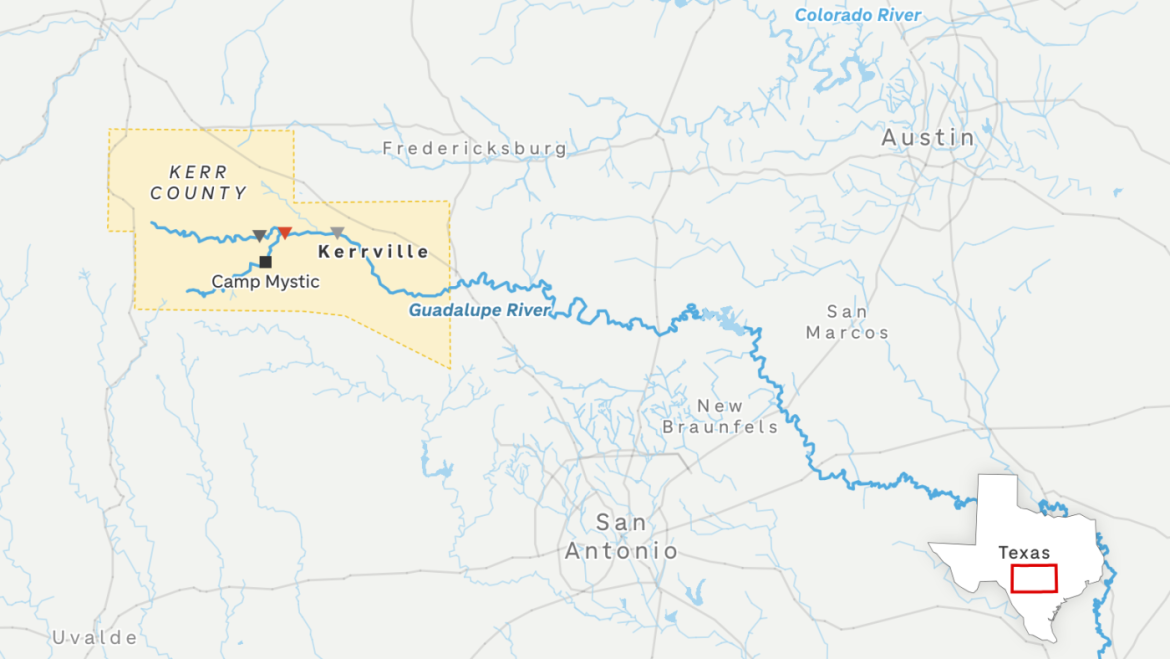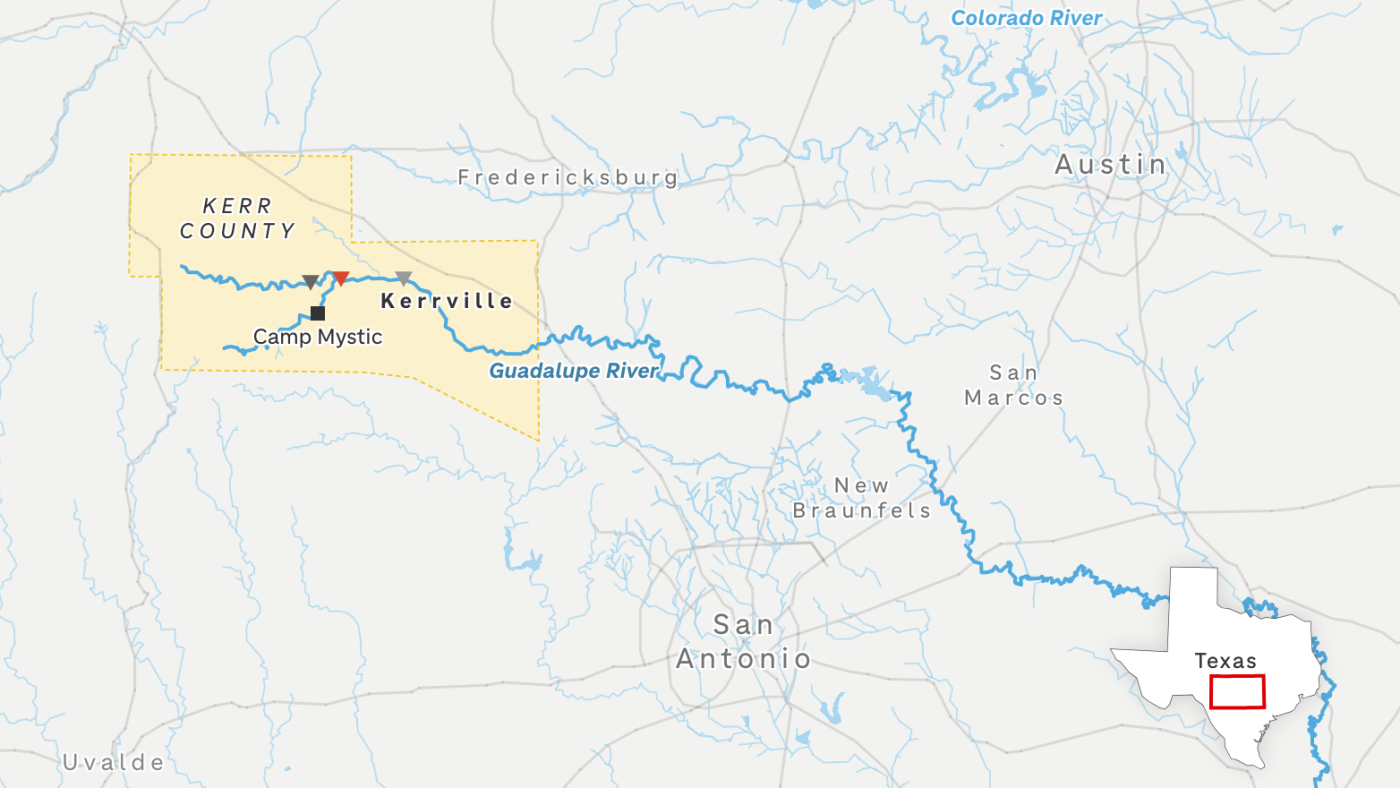The Texas Hill Country, known for its picturesque landscapes and serene rivers, became the scene of a devastating tragedy during the Fourth of July weekend. Catastrophic flooding, fueled by intense rainfall, swept through the region, transforming the usually tranquil Guadalupe River into a raging, deadly force. The disaster claimed dozens of lives, left communities in ruins, and raised critical questions about preparedness and resilience in the face of extreme weather events. This analysis explores the geographic factors, timeline of events, and human impact of the floods, while also examining lessons learned and the path forward for affected communities.
A River Rises: The Anatomy of a Flash Flood
The Guadalupe River, a vital waterway in the Texas Hill Country, became the epicenter of the disaster, particularly in Kerr County, where the highest number of fatalities occurred. In an astonishingly short period—just 45 minutes—the river’s water level surged by 26 feet in some areas, overwhelming campgrounds, residential zones, and emergency responders. One flood gauge near Kerrville and Camp Mystic recorded a rise of more than 25 feet in just two hours, a rapid escalation that left many with little time to react.
Several factors contributed to the flood’s ferocity. Central Kerr County received up to 10 inches of rain in a short span, causing the river to swell beyond its banks. The region’s unique geography—characterized by steep hills and narrow valleys—amplified the flood’s intensity. Water rushed downhill with terrifying speed, turning normally manageable streams into destructive forces. The lack of natural floodplains and the presence of human development along the riverbanks further exacerbated the disaster.
A Timeline of Terror: How the Disaster Unfolded
The events of that fateful weekend unfolded with terrifying speed. While a flood watch was issued by the National Weather Service, the rapid and intense nature of the flooding caught many by surprise. The Guadalupe River’s transformation from a gentle stream to a raging torrent happened in minutes, leaving residents and visitors with little time to evacuate.
The deluge began on Friday, with heavy rains causing the river to swell rapidly. As the water rose, it engulfed low-lying areas, including campgrounds and residential neighborhoods. The darkness of night compounded the danger, making it difficult for people to assess the situation and escape to safety. First responders faced immense challenges in reaching those in need, hampered by the swift currents, debris, and the sheer scale of the disaster.
The search for missing individuals became a prolonged and heart-wrenching effort. Rescue teams combed the riverbanks and surrounding areas, while the recovery process was slow and arduous. The floodwaters receded gradually, revealing the full extent of the devastation—submerged homes, uprooted trees, and personal belongings scattered across the landscape.
The Human Cost: Lives Lost and Communities Shattered
The human toll of the Texas floods is staggering. At least 91 people lost their lives, including entire families, vacationers, and children. The emotional impact on survivors and the wider community is immeasurable. Beyond the immediate loss of life, many people lost their homes, possessions, and sense of security. The images of submerged homes, debris-strewn landscapes, and distraught families paint a grim picture of the disaster’s impact.
The tragedy at Camp Mystic, where dozens of children were caught in the floodwaters, is particularly heartbreaking. The loss of young lives underscores the vulnerability of even well-established locations to the unpredictable forces of nature. The disaster also highlighted the need for better emergency preparedness, particularly in areas prone to flash flooding.
Echoes of the Past: Lessons Unlearned?
The Texas floods were not an isolated event. A similar disaster occurred in the same region in 1987, raising questions about whether adequate measures were taken to prevent a recurrence. The apparent lack of preparedness and the element of surprise among officials suggest that there is a need for a thorough review of existing flood control measures, warning systems, and emergency response protocols.
The rapid development and urbanization in the Texas Hill Country may have also contributed to the increased vulnerability to flooding. The construction of buildings and infrastructure in flood-prone areas can alter natural drainage patterns and exacerbate the impact of heavy rainfall. Stricter regulations on development in these areas, along with improved flood control infrastructure, could help mitigate the risk of future disasters.
A Future Imperiled: Weathering the Storms to Come
The Texas floods serve as a stark reminder of the power of nature and the importance of preparedness. As climate change continues to intensify extreme weather events, it is crucial to learn from this tragedy and take proactive steps to mitigate the risk of future disasters.
This includes investing in improved flood control infrastructure, such as dams, levees, and drainage systems. It also requires implementing stricter regulations on development in flood-prone areas, ensuring that new construction is designed to withstand the impact of flooding.
Effective early warning systems are essential to provide timely alerts to residents and visitors, giving them ample time to evacuate to safety. These systems should be based on real-time monitoring of weather conditions and river levels, coupled with clear and concise communication channels to reach the public.
Beyond the Horizon: Rebuilding and Remembering
The road to recovery for the affected communities will be long and challenging. Rebuilding homes, restoring infrastructure, and providing support to those who have lost loved ones will require a sustained and coordinated effort from government agencies, non-profit organizations, and the wider community.
But beyond the physical rebuilding, there is also a need for emotional healing and remembrance. The memory of those who lost their lives in the floods must be honored, and their stories should serve as a reminder of the importance of preparedness and community resilience. The Texas floods were a tragedy of immense proportions, a stark reminder of nature’s power and humanity’s vulnerability. The hope moving forward is that this serves as a lesson, driving efforts to better prepare for and mitigate the impact of future disasters.


